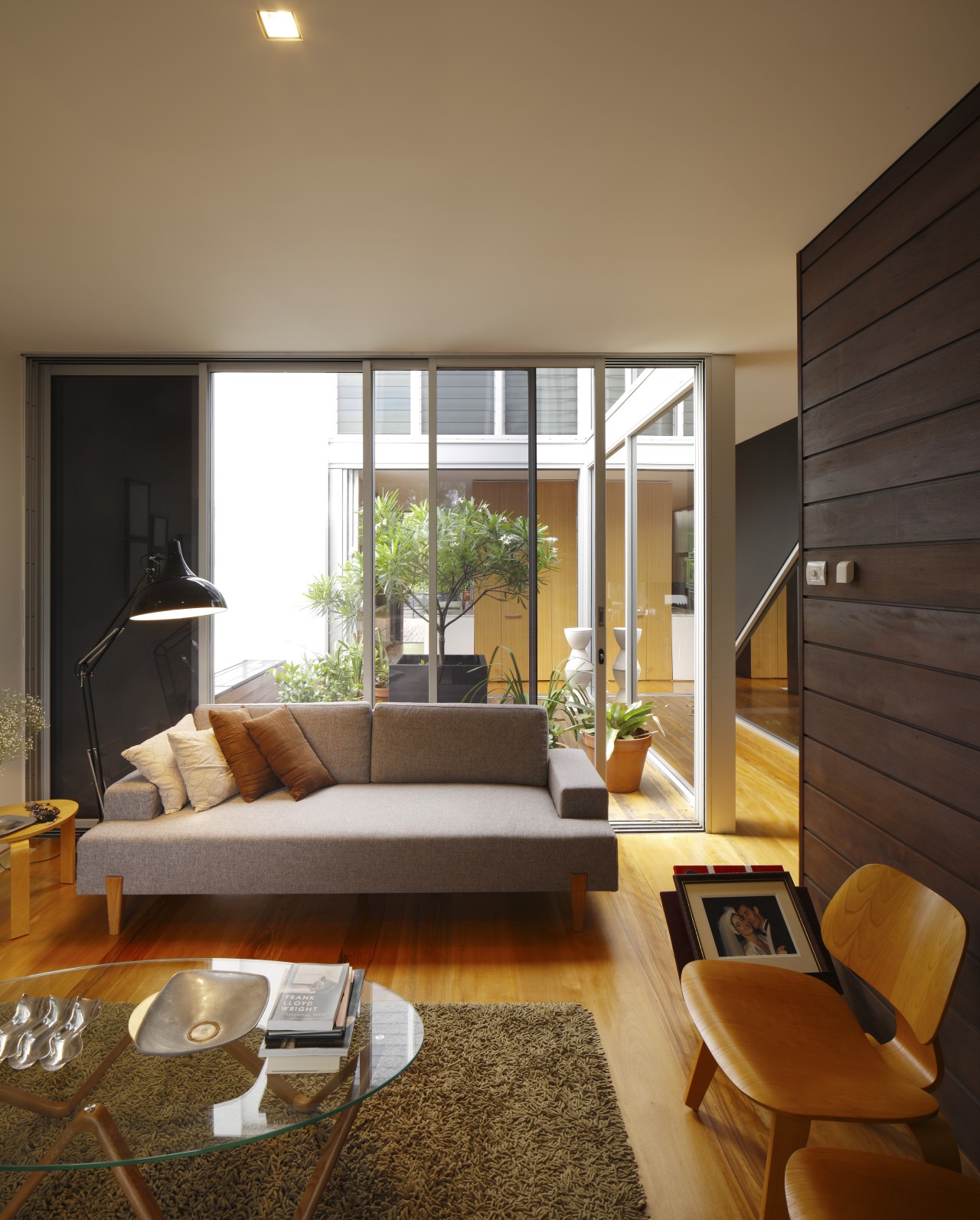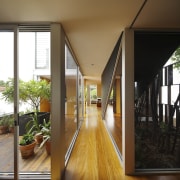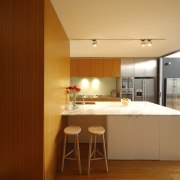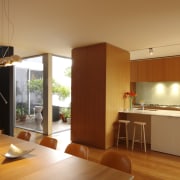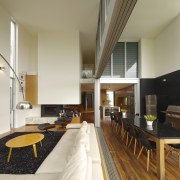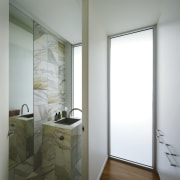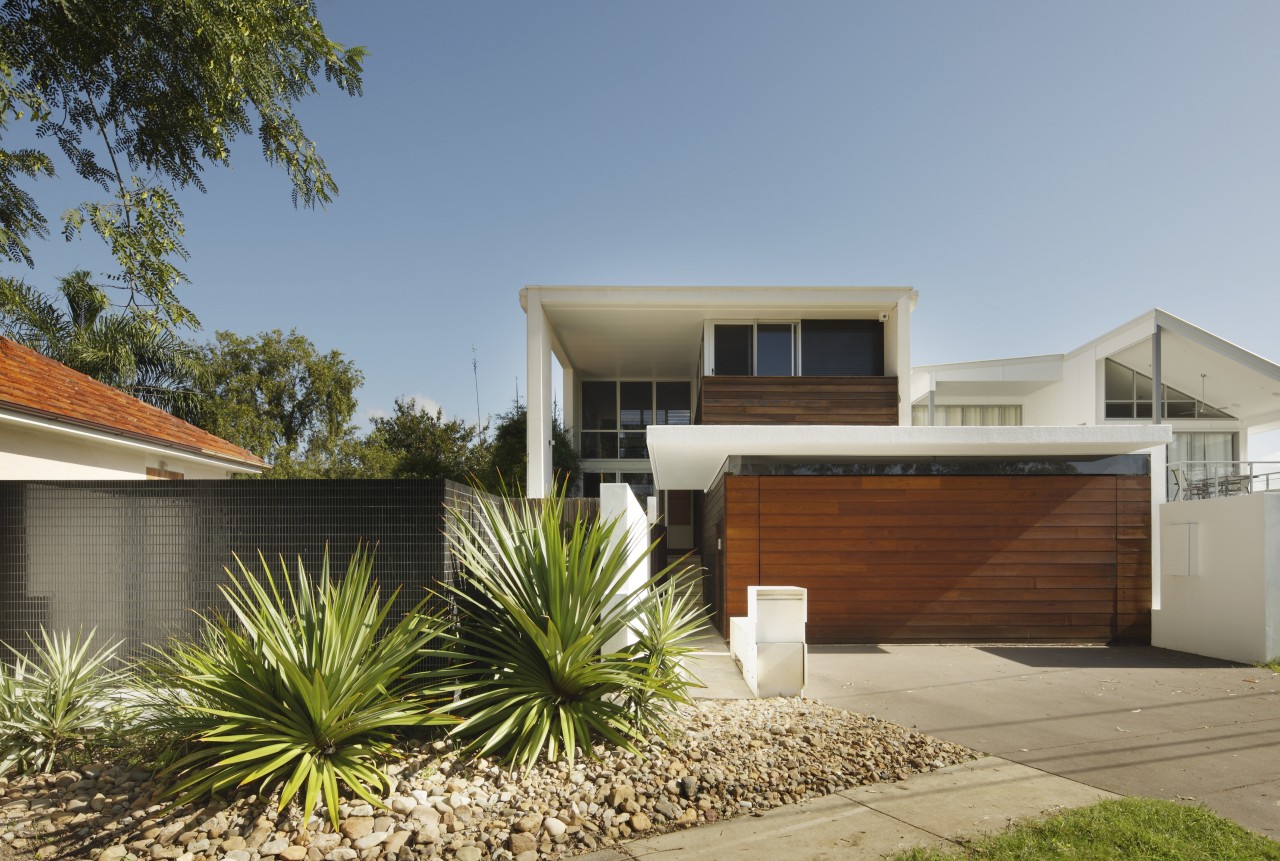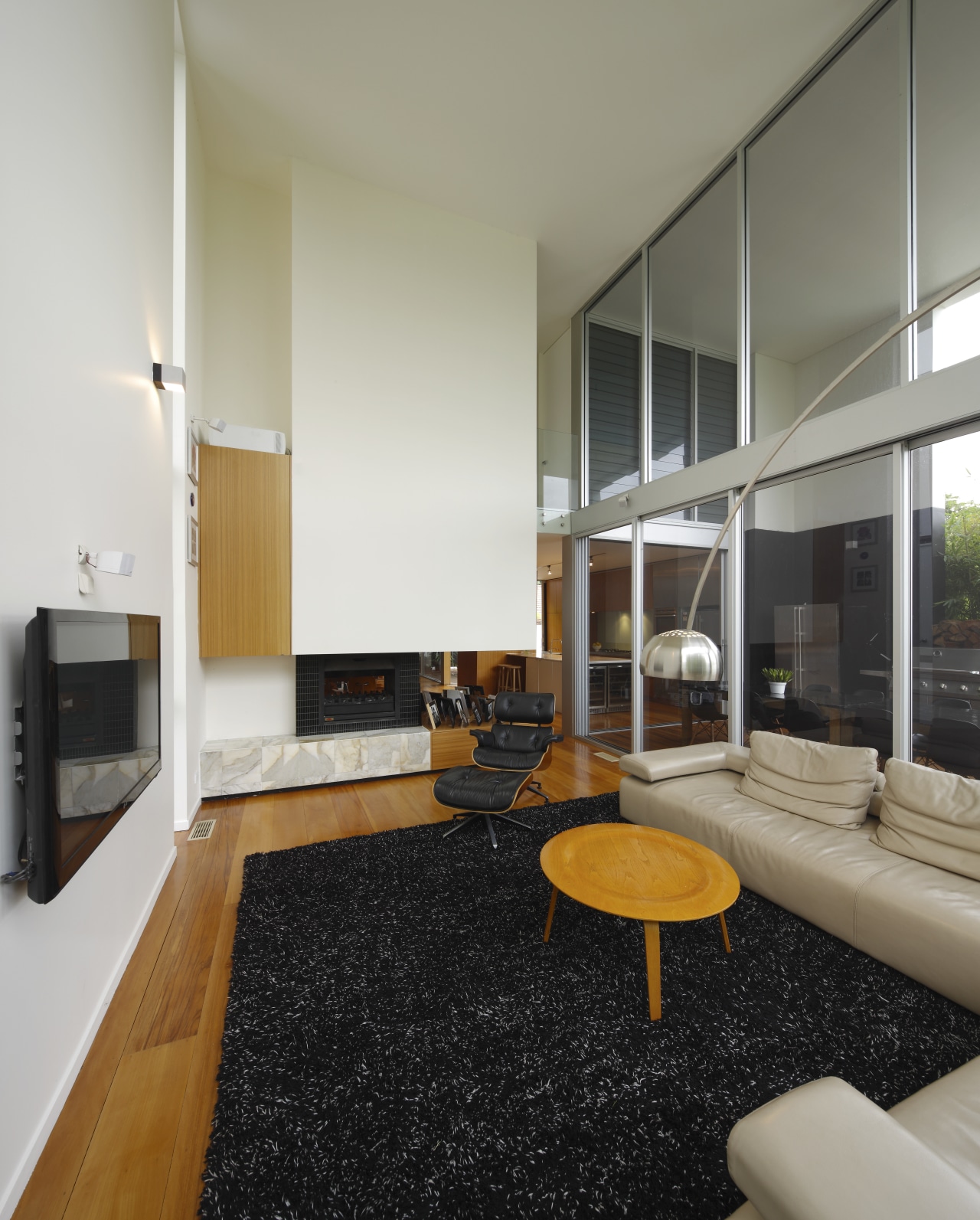Front to back light-filled narrow house
KP Architects solves natural lighting challenge
Long, narrow building sites pose plenty of challenges for architects, and it makes no difference when it comes to designing a house for their own family.
Architect Kon Panagopoulos says it was the location that first attracted his family to this site, opposite the Brisbane River. The suburb is populated with 1940s post-war bungalows, with the original house on the land straddling two sites.
"We removed the house, which left two 50m-long, 12.5m-wide blocks, one of which we chose for our own home," says the architect. "Building regulations meant that any windows on the long boundaries had to be high to maintain privacy for neighbouring properties. This in turn meant the main design challenge was to introduce natural light into the centre of the two-storey house."
To solve the problem, Panagopoulos split the house in two.
"The house was essentially pulled apart to create two separate volumes, which are linked by bridges on each level. This allowed space for a courtyard on either side, with glazed walls bringing light right into the centre of the house."
Elevating the level of the ground floor also improved the amount of light the floor needed to be raised 1.5m to protect the house from floods.
"In the event, it still wasn't high enough," says Panagopoulos. "We had floodwaters through the entire house when the Brisbane River burst its banks in 2011. But we were able to sand back the solid wood floors and restore the interior without long-lasting damage."
To maximise the outdoor areas on the narrow site, the architect positioned a lap pool at the front of the house, with a walled walkway alongside leading to the entry. A vestibule that projects out onto the front terrace helps to create a sense of arrival and avoids having an entry straight into the adjoining sitting room.
Tallowwood features throughout the house, from the exterior cladding to the flooring and the interior walls along the central spine.
"Tallowwood has a very consistent graining, which provides uniformity," says the architect. "While the flooring is in a natural finish, the walls have a dark oil stain. The durability of the hardwood was put to the test during the flood, but the 25mm-thick floorboards didn't buckle."
Panagopoulos says the axis created by the spine walls and central hallway is a key organising element that provides sight lines down the entire length of the house. It also allows views through to the rear yard and out to the river at the front.
The stairs are positioned in the centre of the house beside the glazed walls and internal courtyards.
"The stairs extend out over the eastern courtyard, which is planted with leafy bamboo," says the architect. "The other courtyard on the west side features planter boxes. Both courtyards bring light in from the north and south, on two levels. They also provide essential cross ventilation, which is often a problem for houses on long, narrow sites such as this. With the sliding doors open, there is a good air flow right through the house."
The hallway flows seamlessly into the open-plan family living areas at the rear of the house. The kitchen cabinetry features teak veneer, which was tinted to match the colour of the tallowwood floorboards and the dining furniture.
A large box-like cabinet accommodates the pantry and serves as a dividing element. Negative detailing at the top and bottom of the cabinet creates subtle shadow lines and minimises its bulk.
"This volume is a visual anchor for the bench," says Panagopoulos. "It also helps to separate the working area of the kitchen from the main circulation route."
While most of the cabinetry features the wood veneer, the cabinets surrounding the ovens and refrigerator are in brushed stainless steel. This helps to define the more utilitarian zone.
The kitchen and dining area flow to a family living room and a large, covered deck. Both the living room and alfresco area are double-height volumes. Extra-long sliding glass doors open up the entire end of the living room to the outdoors.
The living room also features a suspended chimney element above a double-sided, wood-burning fireplace with a Calacatta marble hearth.
"We have used a consistent palette of materials throughout the house," says the architect. "Similar marble appears on the kitchen benchtops, and in the bathrooms."
In keeping with the desire to maintain visual links through the house, there is a mezzanine-style balustrade above the living room. This is adjacent to the family bathroom and children's bedrooms.
Story by: Colleen Hawkes
Photography by: Scott Burrows
Home kitchen bathroom commercial design
